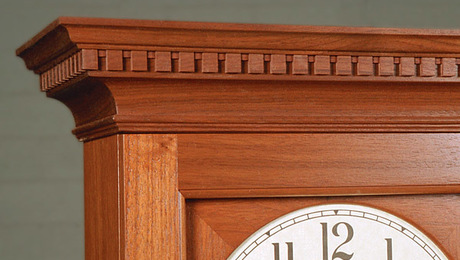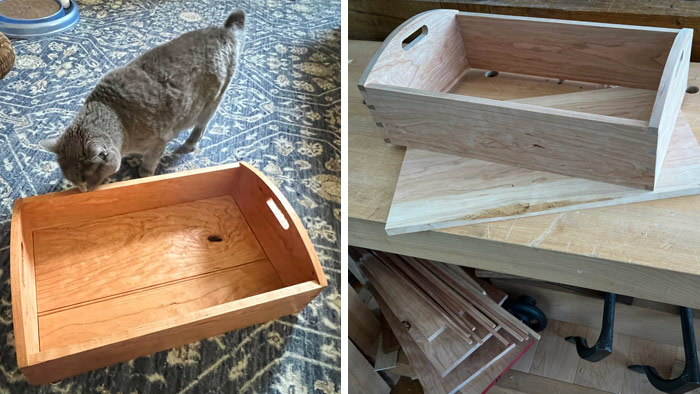Glass-Door Shaker Cabinet – FineWoodworking
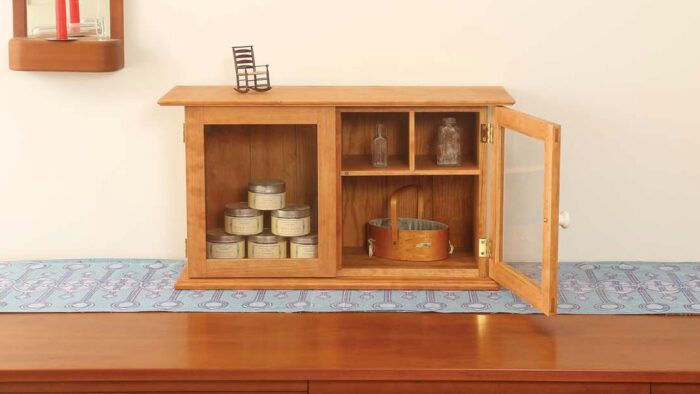
Synopsis: After seeing a photo of a small cabinet at a Shaker community in Kentucky, Christian Becksvoort decided to reproduce it. The cabinet has six backboards, and they overlap the case top and bottom. Four are grooved on both sides, while the end backboards are grooved on just one side.
Splines are inserted in the grooves after the backboards are nailed in place. The door frames have mortise-and-tenon joints. One door has a porcelain pull, while the other has a stopped cove as a finger pull.
A few years ago, I chanced across a photo of a diminutive walnut cabinet at the South Union, Ky., Shaker community. The size, the glass doors, and the interior shelf and divider intrigued me. The cabinet’s purpose was unclear; perhaps it was used to store herbs, medicinals, or sewing notions. The glass doors suggest that it was made after 1850.
Without actually having seen the cabinet, I was hazy about the construction details. I do know a few things: The dovetailed case gets applied with top and bottom boards glued to it after assembly. The vertical backboards bypass the case top and bottom, so the end grain is visible until the applied top and bottom boards are added.
Also, it appears as if the bottom may have been added later because it is shorter and thicker than the top and has dadoes or cutouts on the sides. If I were making a strict reproduction, I would follow all of those details, but as a project for myself, I opted to make a few changes:
The two end backboards sit in rabbets on the sides; I used cherry instead of walnut; I made some slight adjustments to dimensions; and I had to guess and use my best practices where details were not visible.
Dovetails keep it together.
Always tails first for Becksvoort. Start by laying out and cutting the tails on the ends of the top and bottom boards, then place the chisel in the scribed baseline and begin with light mallet blows. Cut out a shallow chip. Repeat. The mallet blows should get harder and the chips thicker. Move halfway through, flip the board, and finish wasting material away between the tails.
 |
 |
Transfer and cut. With the pin board (the case side) vertical in the vise, use a knife to transfer the tails to it. Then use a handsaw to cut between the baseline and the half-blind line.
 |
 |
Chopping pins. As you did with the tails, start with light chisel chops on the scribed baseline. Then remove a thin chip by paring from the front. The next chops along the baseline are deeper. Follow those by removing thicker chips. You can split the chips to remove them because they will be wider at the bottom than the top. Pare along the cheek of the pins, and refine the flat at the half-blind line.
The case: All things not equal
The four case boards are flush at the front, but the case sides are wider than the top and bottom boards and are rabbeted along their back edge to receive the back. The case top and bottom end at the rabbet, allowing the backboards to overlie them.
Dadoes before gluing up. Use a table saw and a dado blade to cut the dadoes for the center divider in the top and bottom case boards. The center divider is the same thickness as the case parts–5⁄8 in.—so that’s the dado’s width as well.
After cutting the dovetails, rabbets, and center divider dadoes, glue and assemble the case. Then focus on cutting the dadoes for the shelf and the shelf divider.
 |
 |
Glue in the nooks and crannies. Spread glue quickly in and around the dovetails on the tail boards as well as the pin boards. Then tap the case together.
Tighten things up. Once you tap all the dovetails home, add cauls and clamp pressure until the glue dries. Check for squares and adjust the clamps if necessary.
Interior infrastructure
A lot of dadoing must be done to create the interior compartments. A center divider gets dadoed into the case top and bottom, a shelf gets dadoed between the center divider and the side of the case, and the shelf gets a small vertical divider dadoed between it and the top.
Dry-fit the center divider, mark it and the right case side for the shelf, then route dadoes in both. Set the shelf in one dado, then mark its length in the other dado. Cut it to size and dry-fit the shelf in place. Mark the center point on the shelf and transfer the mark to the top.
Then with the shelf removed, rout both the case top and the shelf to accept the shelf divider. When everything fits correctly, all the dividers and the shelf can be glued or tacked into place.
Secure the center divider. Slide the center divider in place, drill a pilot hole on each end, and tap in brads to make sure the divider doesn’t move while you’re routing dadoes in it.
 |
 |
Two more pairs of dadoes. To cut dadoes for the shelf, use a trim router and a double-fence jig. Cut the dado on the right side of the center divider, then flip the case and cut the dado on the inside of the right case side. Perform a similar operation to cut the dadoes for the shelf divider.
 |
 |
Assemble the dividers. Once all the dadoes are cut, you can install the shelf and shelf divider. First, drill a pilot hole through each dado (near the front of the case) to locate where the brads will go; this will prevent errant brads from poking through in unwanted places. Next, slide the shelf and shelf divider in place, tap in each brad, countersink it with a punch, and fill the hole with putty.
Atypical back work
The six vertical backboards are next. I joined them with splines in 1/8-in.-wide grooves. The boards will need to be wider if you decide to make them tongue-and-groove or shiplapped instead. The left and right end backboards are glued to the lips of the rabbets; the other pieces are fitted dry and tacked to the case top and bottom.
Getting groovy with the backboards. The six backboards are grooved for splines at the table saw. The two end boards are grooved only on one side; the rest get grooved on both sides.
 |
 |
Start at the ends. Put all the backboards in place dry to be sure they fit, and trim the end boards if needed. Apply glue to the rabbets, put the two end boards in place, drill pilot holes, and drive nails. Set the final four backboards in place dry, making sure they are flush with the top and bottom boards.
 |
 |
Tape, nail, and insert. Tape across the backboards and over the sides to keep the boards from shifting. Drill pilot holes and nail the boards in place, avoiding nailing into the spline grooves. Slide the splines into their grooves. When the top and bottom boards are added, they will be trapped in place. Leave a small gap between the backboards (about 1⁄16 in.) as well as in the spline recess to allow for wood movement.
Double down on the glass doors
Once you’ve glued up the door frames, you can hinge them. I use a combination of a trim router and chisels to get the job done. When they are hinged, you can fit the doors, leaving about a 1/32-inch. gap at the top, about a 1/16-in. gap at the bottom, and a strong 1/16 in. between the two doors.
 |
 |
Hinge the doors. Lay out, route, and chisel the hinge mortises in the door stiles. Once you install the hinges in the doors, set them on the case and transfer the hinge locations. Then cut the hinge mortises in the case sides.
 |
 |
The perfect fit. With the doors installed, finetune their fit. Use a straightedge and a pencil to mark any places where you want to remove material with a block plane. As a general rule, Becksvoort leaves “a dime fit at the top and a nickel fit at the bottom– because hinges never move up.”
Integral pull. The right-side door has a porcelain knob, but the left side has a relief on the inside of the stile for the fingers to grab when opening. Cut the stopped cove pull with a quarter-round bit at the router table.
With the doors removed, drill for the porcelain knob (mine is from vandykes.com), and the magnet catches, and route a stopped cove as a finger pull on the inside of the left door stile. Before rehanging the doors, install the glass, make thin strips for stops, and use tiny brads. To add a bit of historical authenticity, I use old or restored glass.
Top to bottom
Once the case is assembled, the applied top and bottom boards can be profiled. The front and end edges of the top get rounded over, with a small fillet on the underside. On the bottom board, the front and ends get a heavier round over, with a fillet on the top. I wait until after I’ve hinged the doors to the case to attach the top and bottom.
 |
 |
Two cuts per profile. The applied top gets a round over with a fillet on the underside. With the board face up, use a 3⁄16-in.-radius round over bit raised to cut the fillet as well as the curve, and profile both ends and the front edge. For the second cut, flip the board bottom side up and lower the bit to cut only the curve.
Follow the same steps for the applied bottom board, but switch to a 1⁄4-in.-radius round over bit and cut the fillet on the top face of the board instead of the bottom face.
Orient the applied top and bottom. After applying finish to the case (having masked off glue surfaces), position the top and bottom so the side overhangs match, and pencil some marks to guide realignment later.
 |
 |
Glue on the top and bottom. With the case on its back on bar clamps, skim a layer of glue on the top and bottom boards. Position the boards on the case, and use spring clamps to hold them in place while you tighten the cam clamps and bar clamps.
Before gluing on the top and bottom, apply the finish to them and the rest of the cabinet. Be sure to tape off the parts first to prevent the finish from getting on any glue surface. When the finish is dry, glue the top and bottom in place on the case, leaving a 3/4 in. overhang on the front and a 2-in. overhang on the sides. You can use C-clamps or cam clamps in the front, bar clamps in the back, and cauls with bar clamps on the sides if needed.
Glass installation
After applying a finish, Becksvoort installs old or restored glass in the doors. It has a subtle wave to it and is in keeping with the original. The stops get tacked into the frame.
Preload the stops. Set the glass in the rabbets. Before you put the stops on the glass, drill pilot holes and set brads. Then place the stops on top of the glass against the frame.
 |
 |
Two ways to set up a brand. Lay a thick piece of paper on the glass to protect it while you tap the brad in place with a hammer. Alternatively, you can use an adjustable wrench to slowly squeeze the brad home.
Finally, reinstall the doors and add the magnets in the doors and two small screws in the case to catch the magnets.
—Christian Becksvoort is a furniture maker in New Gloucester, Maine.
To view the entire article, please click the View PDF button below.

Shop Tour: Christian Becksvoort
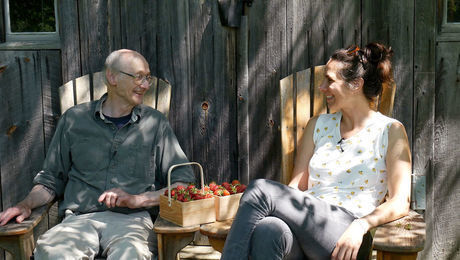
Berry Picking with Christian Becksvoort
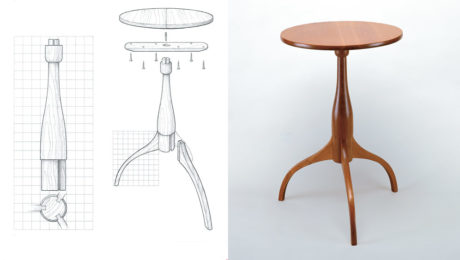
Shaker Candle Stand with Christian Becksvoort
Fine Woodworking Recommended Products
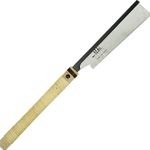
Suizan Japanese Pull Saw
A versatile saw that can be used for anything from Kumiko to dovetails. Mike Pekovich recommends them as a woodworker’s first handsaw.

Blum Drawer Front Adjuster Marking Template
This template acts as a “dowel center” for punching a hole to mark where to drill for clearance holes.
Sign up for eletters today and get the latest techniques and how-to from Fine Woodworking, plus special offers.
Download FREE PDF
when you enter your email address below.

















